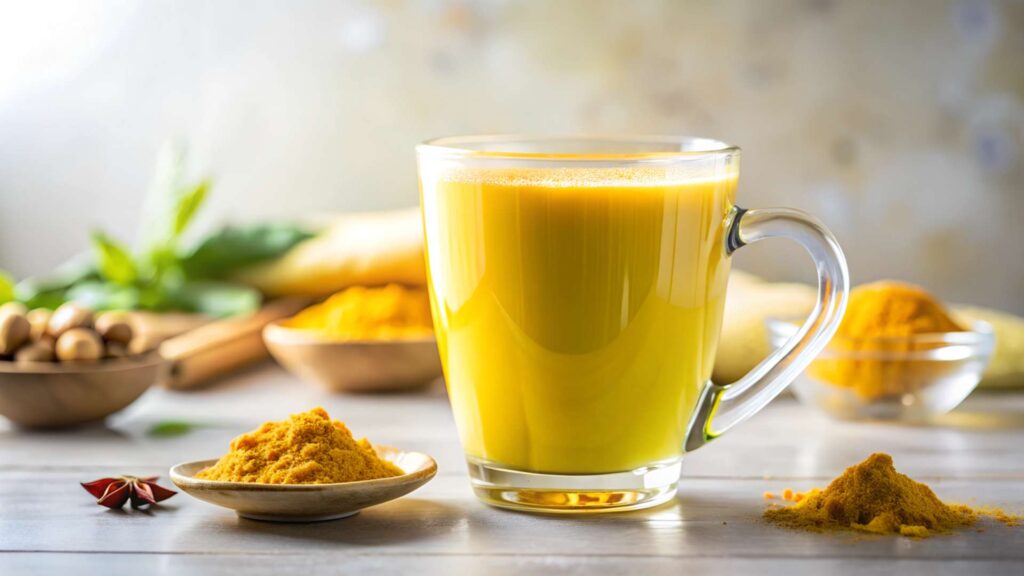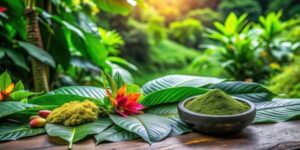Ashwagandha, together with kratom, represent two well-known botanical substances that attract growing scientific interest because of their potential uses.
According to traditional Ayurvedic wisdom, Ashwagandha acts as an adaptogenic herb, but kratom brings diverse benefits because it exists as a tropical Southeast Asian tree species.
Do these two substances provide a safe combination opportunity for users?
The following analysis explores how Ashwagandha benefits individuals before examining the safety and effectiveness aspects of combined use with kratom while offering guidance to potential users.
The following guide provides all the necessary information regarding Ashwagandha identification, Ashwagandha energy use, and kratom-Ashwagandha pairing possibilities.
What Is Ashwagandha?
Ashwagandha exists as an evergreen shrub that grows naturally in India and the Middle Eastern regions, and parts of Africa.
This medicinal plant bears the scientific designation Withania somnifera, while it is commonly known as Indian ginseng and winter cherry.
Sanskrit scholars defined Ashwagandha through its smell of horsepower because of its benefits towards boosting strength.
The plant develops orange-red edible fruits which possess an earthy-bitter taste while its roots contain alkaloids and bitter substances.
The healing properties of these two substances have been used by people for more than five centuries.
Ashwagandha stands as one of the principal herbs used in Ayurveda, which represents the traditional natural healing system from India.
The traditional use of ashwagandha as a remedy by practitioners existed to boost concentration levels and provide vitality while reducing physical tension.
Ashwagandha exists as a Rasayana-type natural substance that preserves both adult physical health and youthful mental state.
Modern science describes ashwagandha as an adaptogenic plant. The restorative and resilience-enhancing properties of ashwagandha base their health benefits on restoring balance in the human body.
Traditional practitioners prepared tea using ashwagandha root material. People can obtain ashwagandha today in pills and capsules as well as in powder form.
Modern companies use ashwagandha in oil and cream products yet the scientific evidence regarding this delivery technique remains limited.
What is ashwagandha used for?
People utilize ashwagandha plants to combat various health problems, including stress, discomfort, fatigue, and sleep disturbances.
This section examines scientific research regarding these registered uses of ashwagandha.
Certain studies show that ashwagandha provides protection against brain cells and reduces the inflammatory response.
Several health conditions develop from inflammation, so using ashwagandha could serve as a protective measure for both body and mind.
Most studies were on animals or at the cell level, so we still don’t know precisely how the herb interacts with the body. Here’s which health applications have some scientific backing:
1. Reducing stress symptoms
Ashwagandha has similar properties to the lorazepam drug. Researchers further found that people experience less stress and lower cortisol levels when they consume it.
2. Improving sleep quality
The collected research indicates that ashwagandha provides sleep benefits to both restless patients and non-restless individuals.
Asthi Ayurved developed its stress-busting properties which cause this response.
3. Reducing arthritis-related aches
The plant has been shown to cut off the transmission of pain signals to the parts of the nervous system. The mixture of anti-inflammation with this effect potentially benefits people who suffer from rheumatoid arthritis.
4. Relieving mental health conditions
An examination revealed that the herb reduces tension, particularly for persons with schizophrenia.
Research indicated that bipolar disorder patients might experience decreased cognitive impairment when taking the substance.
5. Improving heart health
People employ this herb because it helps decrease blood pressure levels as well as cholesterol counts and relieves chest discomfort.
Experimental human research from 2015 showed that ashwagandha improves respiratory function and heart function simultaneously.
6. Decrease the progression of diseases
The root shows potential for slowing the advancement of Huntington’s, Alzheimer’s, and Parkinson’s diseases. The evaluation of ashwagandha as a brain path protector emerged from a 2011 review.
The herb demonstrates the potential to assist people whose medical conditions have not reached severe stages.
7. Increasing male fertility
Research shows that older men experience greater testosterone production as the root reduces inflammation and fights fatigue.
Researchers found through a review that ashwagandha helps raise sperm concentration, together with sperm volume and mobility, when a man has low sperm counts.
Key Benefits of Ashwagandha
Ashwagandha creates widespread recognition for its effectiveness in reducing stress and anxiety by controlling cortiso,l the body produces as its main stress hormone.
- Energy and Vitality: The supplementation of Ashwagandha provides energy to many users because it improves both physical endurance and cognitive focus.
- Improved Sleep: The restful sleep properties of Ashwagandha stem from its dual effects of mental relaxation and stress decrease.
- Immune Support: Research indicates that the herb stimulates immune response and creates better overall body resistance to stress.
- Cognitive Function: Multiple scientific studies indicate that Ashwagandha demonstrates its capability to improve mental focus as well as memory function.
Understanding Kratom?
Kratom comes from the tropical Southeast Asian tree that belongs to the coffee family. The region of origin extends from Indonesia to Thailand through Myanmar and later includes Malaysia and Papua New Guinea. The taxonomic name defined by biology is Mitragyna speciosa.
These tree leaves contain numerous alkaloid chemicals that interact with both the human brain and the body system. Within their homeland, traditional folk medicine uses these bitter leaf substances because of their herbal aroma while playing the leading role in medical treatments.
Attractiveness toward kratom stems from its ability to function as both an activating and a sedative.
The substance generates stimulant or relaxant effects, which makes it suitable for attention enhancement and energy conservation helping patients recover after injuries and maintaining sleep quality.
Speakers within certain scientific communities suggest that kratom served its purposes as a ritual substance to facilitate spiritual transcendence for those practicing spiritual beliefs.
Traditional healers consumed kratom leaves by chewing or steeping them to make herbal tea. Western customers can buy dry kratom leaves in addition to receiving this product alongside kratom capsules and powders.
Effects Of Kratom
Kratom effects are dose-dependent, meaning they change with how much you take. As a general rule, here’s what you might expect:
- Low doses are energizing and stimulating: Users describe similar effects as drinking strong coffee without its usual jittery side effects of caffeine. Your concentration improves as your energy reaches new heights to give you complete alertness. Kratom amounts are known to function as aphrodisiac substances for individuals.
- High doses are soothing and euphoric: Users experience complete tranquility together with laziness before they feel prepared to relax. Body warmth and faint visual changes are experienced by several users when they consume this dosage. The selected dosage creates minimal discomfort, which could ultimately lead to sleep.
After deciding on your dose of kratom, you can modify your experience by picking between different kratom strains.
People describe Maeng Da as speedy, although Sumatra works smoothly with new users. Selecting the right kratom strain offers additional control over the effects received.
What does science say about kratom? Research is still scarce, but here are some potential applications:
- Combating stress and the blues: Research using laboratory animals has demonstrated that this plant helps users feel happier during stressful situations. After taking mitragynine which serves as the main kratom alkaloid, both male and female mice revealed less stress hormone activity.
- Relieving physical discomfort: After ingestion, kratom produces temporary effects that decrease the sensation of pain and body tension. Medical professionals consider this effect equal to that of opium and useful for people dealing with different health problems.
- Assisting withdrawal: Scientific research from 2008 indicated that kratom proved more effective than pharmaceutical medicines for withdrawal symptom reduction.
Key Benefits of Kratom
Energy and Focus: Certain kratom strains, such as White Maeng Da, are known for their energizing and focus-enhancing effects.
- Relaxation and Comfort: The relaxing components of kratom exist within the red strain variety which includes Red Bali as an example.
- Mood Enhancement: Users have reported that kratom produces favorable effects on their mood together with better overall well-being.
- Pain Relief: Deadly kratom serves traditional uses in pain management, but medical research needs to confirm this effect.
Similarities of Ashwagandha and Kratom
Before looking at ashwagandha vs. kratom, let’s see where these two herbs resemble each other. Here are the similarities between Ashwagandha and Kratom:
- Centuries of recorded use: Traditional medicine practices in their native territories relied on these two medicinal plants. History shows that both plants are safe medications because people would stop using them if they lacked therapeutic value.
- Alkaloid-rich composition: Both herbs employ alkaloids which represent active substances that medical researchers have extensively studied. The plants possess easy-to-identify chemical structures that enable scientists to recommend them as natural medicinal substances.
- Stress-busting properties: The modern world requires stress relief, and both medicinal plants demonstrate efficient results in this domain. These herbs enter the market as solutions when individuals need to remedy issues caused by hectic, stressful ways of living.
- Bitter herbal-earthy flavors: The experience with a herb gets altered by its aromatic properties even though scent ranks behind other factors. The two plants demonstrate equally pleasing characteristics that blend harmoniously.
- Delivery methods: The market offers both kratom and ashwagandha in powder format and capsule products. The products offer convenience, which helps users consume them without difficulty.
Combining Kratom And Ashwagandha
Kratom and Ashwagandha pairing emerge as interesting because these botanical substances offer separate advantages that could potentially support each other. However, it’s essential to approach this combination with caution and understand how these substances interact.
Potential Synergies
- Stress and Anxiety Relief: The stress-reducing and anxiety-easing properties exist in Ashwagandha combined with the properties found in kratom. Ashwagandha works as an adaptor to calm users down alongside certain kratom strains, particularly Red Bali which provides a peaceful effect.
- Energy and Focus: When using Ashwagandha for energy enhancement you can achieve balanced mental clarity with White Maeng Da kratom as an energizing strain.
- Overall Well-Being: The combination of Ashwagandha and kratom delivers benefits for maintaining equilibrium which makes these products appealing to people looking for natural solutions to boost their daily experiences.
Potential Risks
While there is no definitive evidence suggesting that Ashwagandha and kratom cannot be taken together, there are a few considerations to keep in mind:
- Individual Sensitivity: The chemical composition of individual bodies differs so medications that help one person may not benefit another. Test the combined effects of both substances at minimum starting doses to determine your reactions.
- Overstimulation or Sedation: Depending on the strains and dosages used, combining Ashwagandha and kratom could lead to overstimulation or excessive sedation. Pay attention to how your body responds.
- Lack of Research: The scientific community lacks sufficient evidence regarding the combined effects of Ashwagandha and kratom. The available anecdotal evidence suggests these substances can be used together without harm but users need to exercise due care.
Wrapping Up
People seeking natural enhancement options have a promising possibility with the joint administration of Ashwagandha and kratom.
The simultaneous use of Ashwagandha together with kratom creates possible synergistic interactions that enhance relaxation along with energy and body equilibrium.
Patients must exercise careful moderation when using these two botanical substances together. First, use minimal dosage amounts but continuously check your body’s reactions before seeking medical guidance.
These safety guidelines enable you to experience the possible benefits of Ashwagandha and kratom use together.
Understanding the specific properties of these substances and their potential response to one another enables you to plan a routine that delivers beneficial outcomes to your individual needs.
Read More







